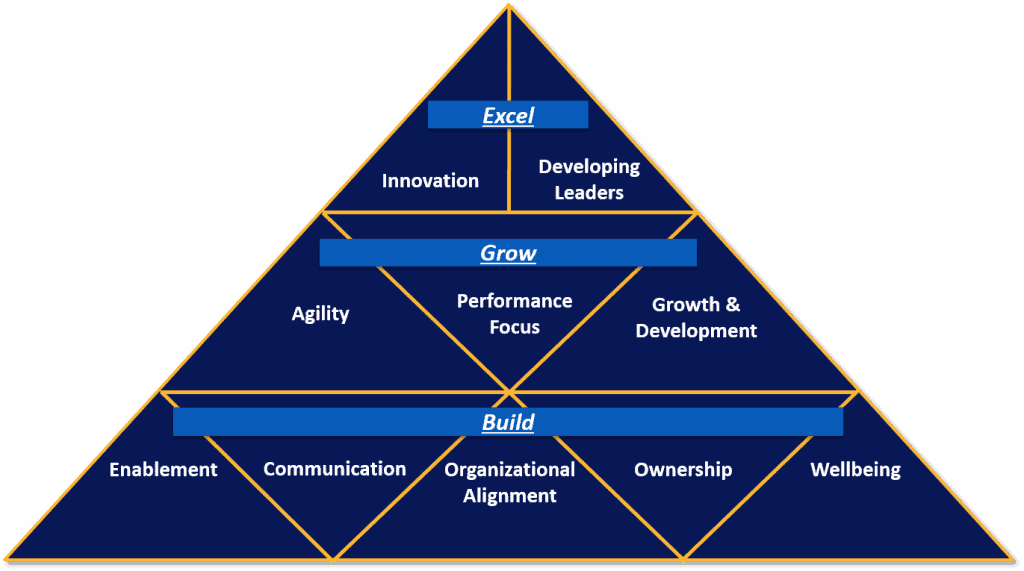What is the first thing that comes to your mind when you hear the word ‘Need’?
‘Need’ by definition means ‘Require (something) because it is essential or very important rather than just desirable. Based on this definition, a need is much more basic than a want or desire. In reality, all human beings have needs. In fact, our needs vary as per the situation and stages of evolution. Human needs are different in personal and professional spheres of life and humans by nature are always striving to fulfill these needs.
Human needs have been a subject of research for several years. In 1954, American Psychologist, Abraham Maslow explained the concept of human needs using a theory, which is called Maslow’s Hierarchy of Needs. According to this theory, human needs can be organized in a hierarchy of importance, starting from our basic psychological needs all the way up to our need for self-actualization. Maslow’s theory states that we are constantly striving to fulfill our needs and our motivation levels are directly proportional to our effort to do the same.
But can this theory be applied in an organizational setup?
Let’s think this through. The foundation of any organization is its employees, its most important asset; and the employees are governed by certain professional needs. Depending on how well these needs are taken care of, an employee goes through certain workplace experiences that result in building certain beliefs and taking certain actions. Fulfilling these employees’ needs is not only a necessity for any organization, but the inability to do so can prove to be quite detrimental. Actually, the prime reason for employee disengagement, leading to low workforce motivation and high attrition, can be attributed to not knowing employee needs and how to meet these to create good experiences.
Which employee needs should you focus on and how does this have a bearing on workplace experience?
The answer to the above question is not straightforward. In a quest to answer this question, we started our research on this subject in conjunction with several employees and industrial psychologists. Our research showed that the workplace experience of any organization is governed by 10 parameters, which in essence are the needs an employee has in a workplace.
According to our research, these 10 parameters (needs) could be organized in a hierarchy of importance, depending on the evolution phase of an organization. We call this hierarchy the Workplace Experience Hierarchy of Needs.

Any organization typically goes through three phases of evolution viz. Build, Grow, and Excel. During each phase, employee needs vary and organizations should focus on fulfilling the same at every level, which will make or break the organizations’ workplace experience.
Most startups are in the Build phase; employee needs in this phase are basic but commonly ignored leading to a disengaged workforce and high attrition
Build – This is the first phase for any organization, where strong foundations are laid to create value for customers and stakeholders. In this phase, employees play a pivotal role and are the binding glue in the organization. Typically, employees have 5 basic needs in this phase, which is crucial for long-term engagement
- Enablement – The most basic need of any employee is to have the right tools and resources to carry out his job/tasks well. Enabling employees with the right resources is a necessity, which if unmet leads to an unproductive workplace experience
- Communication – Employees constantly rely on communication across leadership, peers, and subordinates to get the work done. Access to open, reliable, and timely communication is a basic but crucial need for any employee which if unmet leads to chaos and confusion in a workplace
- Organizational Alignment – The organization’s mission, vision, and value system are like the North Star, which helps employees have a sense of purpose and take decisions, which are in tune with the strategic objectives. A misalignment in this direction can make an employee feel lost and take out of sync decisions
- Ownership – Most employees have an inherent need for responsibility. Every organization needs to provide an environment, where an employee can take ownership without fear and feel responsible for results above and beyond their realm of work
- Wellbeing – Employee wellbeing is a major factor contributing to long-term engagement. An organization should provide an environment that is considerate about its employees’ physical and mental wellbeing to keep them motivated at the workplace
As organizations evolve, employee needs also evolve and employees are constantly striving to meet higher needs
Grow – This is the second phase of evolution, in which organizations are on a high growth trajectory rapidly adding new customers. This phase is quite tricky and most often where things go wrong. Most organizations fail to cater to employee needs owing to the fast paced and changing environment. The effects of this failure are felt on employee performance and ability to adapt to changing environments. Employees have 3 needs in this phase which are tuned towards
- Agility – Employees need a nimble environment to adapt to constantly changing variables at a workplace in order to make quicker decisions. In the growth phase, organizations inherently need to have an agile mindset or else their workforce will not be able to adapt to changing conditions
- Performance Focus – Employees typically strive to make winning a habit in his/her career and constantly raise the bar for achievement. But this is not possible till an organization has a performance focus to keep challenging its employees to perform better
- Growth & Development – Growing career trajectory is an important need for any employee. An exponential growth curve is what most employees want to achieve in a career span and organizations should invest in their career development to help achieve the desired growth
Excel – This is the last phase of evolution for an organization. In this phase, companies have achieved certain maturity and are focused on achieving excellence. Employee needs in this phase are more from a self-actualization standpoint. Organizations that have managed to achieve excellence have invested heavily in fulfilling two employees’ needs
- Innovation – After achieving excellence in their routine work scope, employees are constantly trying to create something new or do something differently. Organizations in this phase should have an innovation ideology and give their employees an opportunity to innovate or else they will lose interest in their work responsibilities
- Developing leaders – Most employees are driven to move up the ladder and assume leadership responsibilities. An organization should focus on developing torchbearers within its own ranks. In fact, this is the best solution to resolve internal leadership problems
Having explained the different phases of evolution for an organization, it is important to remember that the journey is from the bottom to the top of the pyramid. While at the bottom, organizations should focus on building the base layer. However, on moving higher, parameters on lower layers cannot be ignored.
To sum it up, the 10 parameters are the key to achieve a high-performance organization and create a Workplace Experience that acts as a strategic enabler. Everything hinges on how well any organization caters to its employees’ needs and those who do invest in employees are reaping a workforce that is engaged, motivated, and committed.

